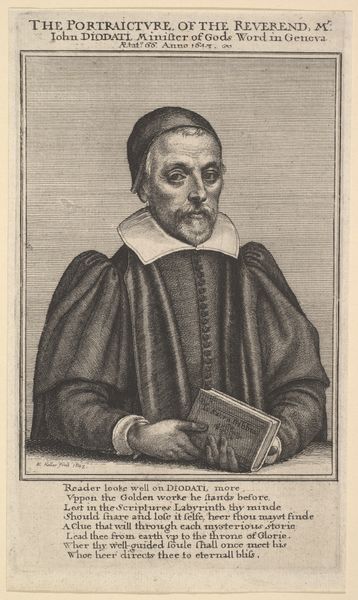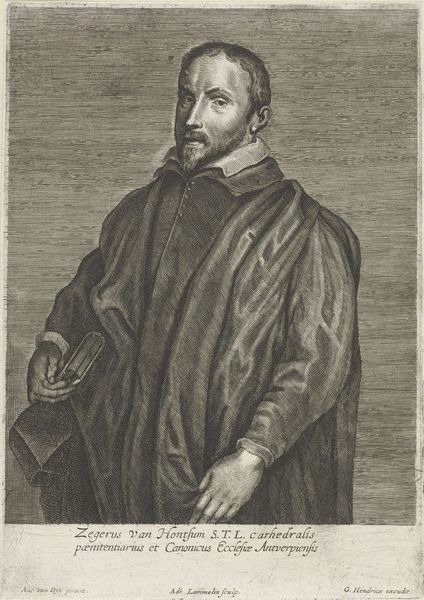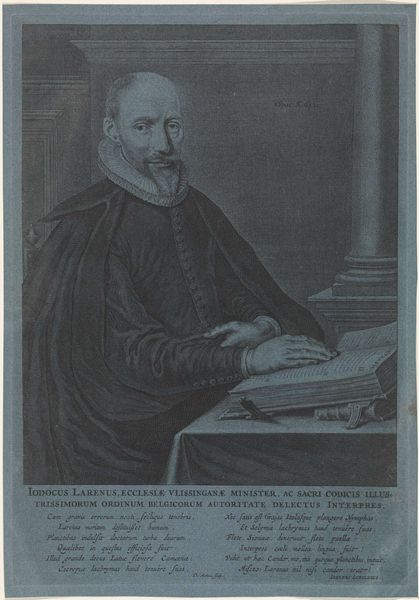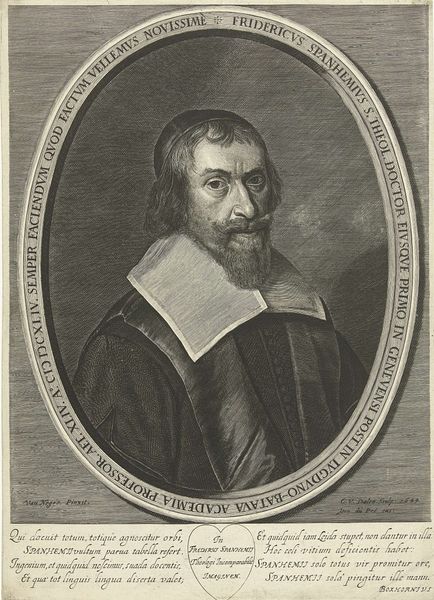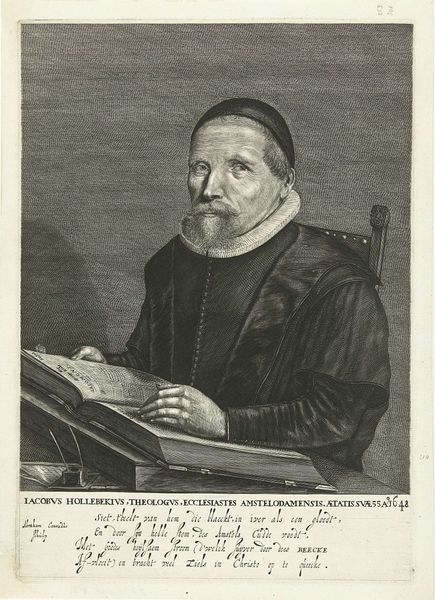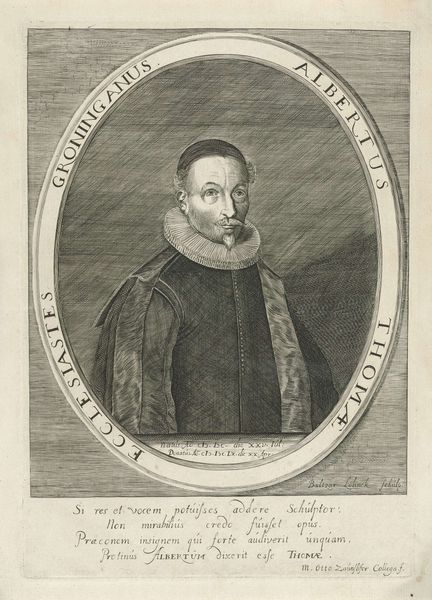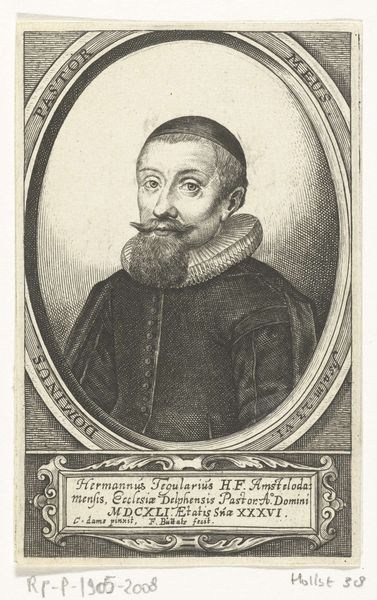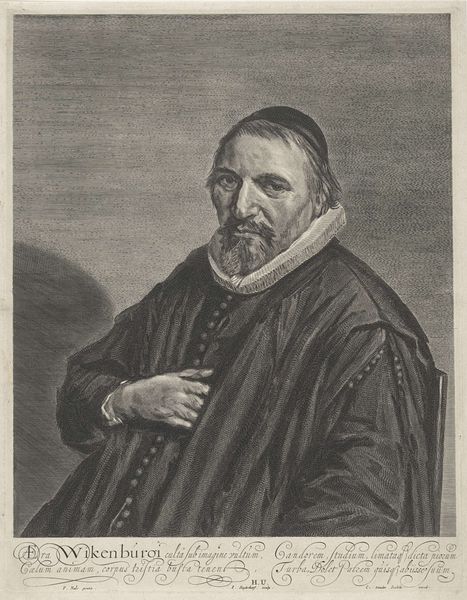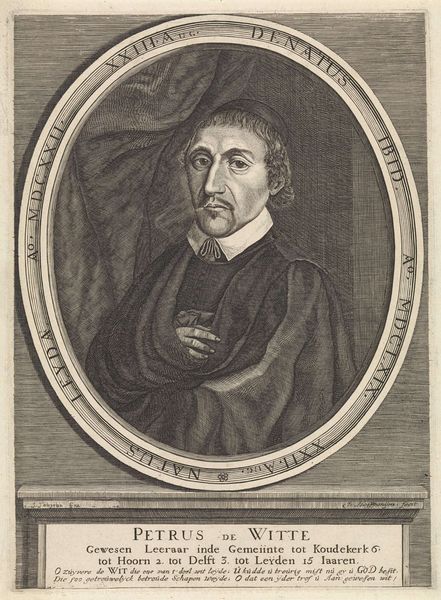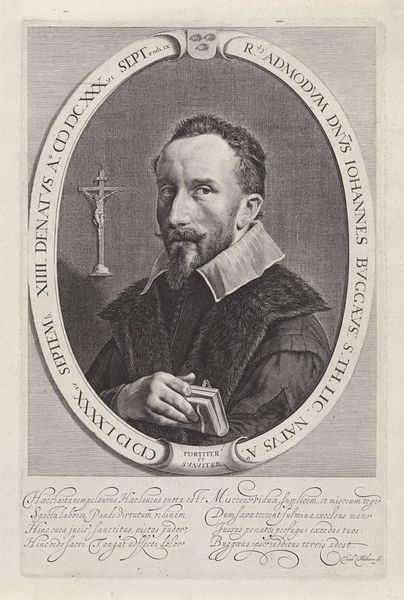
print, engraving
#
baroque
# print
#
old engraving style
#
19th century
#
portrait drawing
#
history-painting
#
engraving
Dimensions: height 318 mm, width 222 mm
Copyright: Rijks Museum: Open Domain
Curator: This engraving, simply titled "Portret van Reimerus Ligarius," likely created sometime between 1655 and 1673, captures its sitter at work in his study. We're fortunate to have it here at the Rijksmuseum. Editor: There's a contemplative atmosphere here, even solemn. The dense cross-hatching gives everything a weighted, almost tactile quality. And is that an hourglass there beside the book? Heavy, as in, literally weighty. Curator: Indeed. The engraving's sharp lines detail everything: the sitter's furrowed brow, his lace collar, even the texture of the paper in front of him. As a print, the original would have been reproduced multiple times; in essence, disseminating Reimerus Ligarius's image across society. Editor: Think about the material process too. The labor required to cut these fine lines into a metal plate. Consider the accessibility a print like this offered versus a painted portrait. This wasn’t for just anyone; still, these sorts of things began the process of commodifying representation itself. And for whom was it "accessible," eh? Always a fun question... Curator: Good point. Also the texts inscribed within the piece—above his head a block with ecclesiastical Latin, below, more Latin plus his name in large font...plus early Dutch? A layering of languages and statuses to be certain. Editor: Yes, the layering reinforces the meticulous process. Consider also how printmaking at this time—particularly engravings like this—depended on access to specific metals and skilled artisans to handle tools. Not always guild members or 'officially' acknowledged talent, neither. We should remember and investigate the many contributions of anonymous labor here. Curator: True enough. Even now, looking at the sharp contrasts the engraving achieves and its clarity…it’s a strong reminder of the precision and expertise involved in such works. So, it invites you to think more deeply about what and WHO comprises “art history”. Editor: Well said. And to not take for granted all of the various hands, famous and unfamous, visible and not, that shaped and keep shaping the images and art we behold.
Comments
No comments
Be the first to comment and join the conversation on the ultimate creative platform.

